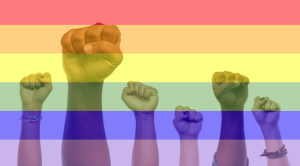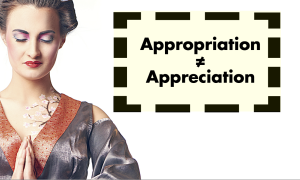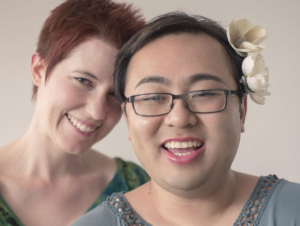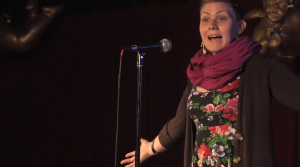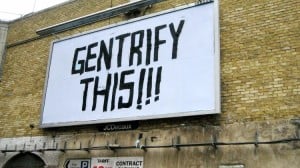
Source: Getty Images
I remember clearly the first time I considered what it would take to change abusive behaviors.
I was listening to a Native faculty member at my undergrad lead a conversation on what justice could look like in Indigenous communities, specifically relating to perpetrators of abuse and sexual violence – and my mind was blown.
I was nineteen and a survivor of childhood sexual abuse and multiple instances of sexual assault. But sitting in that room was the first time it occurred to me that I might be missing something in how I was thinking about abuse and violence.
And that missing piece was restorative justice – an alternative to the criminal justice system that emphasizes perpetrators taking responsibility for the harm they cause and actively working to make amends to everyone impacted.
In all of the conversations I’d had with other folks up to that point, the focus was solely on victims and survivors. The only attention given to folks who were abusers or perpetrators was usually the cursory “The only person who can stop abuse or prevent an assault is the perpetrator.”
The end.
There was never any discussion about what it would take for someone to stop abusing, beyond the surface acknowledgment that abusing someone is a choice. And there were certainly no resources or models for supporting individuals who were attempting to change abusive behaviors and hold themselves accountable.
But exploring restorative justice as an option when violence has been committed could close this gap – and also help change the ways we talk about violence in our society.
Because my lack of exposure to the question of how communities can strive for accountability outside the criminal justice system is mirrored in the larger movement against violence. And I think that’s something we need to reconsider.
Now, I’m not advocating for centering perpetrators and abusers in the anti-violence movement; it’s important and necessary that the voices and experiences of victims and survivors drive that.
And I want to emphasize before I say anything else that survivor safety should always be the priority, and we need to remember that – especially when we start talking about what it takes to change abusive and violent behavior.
However, if we’re committed to ending violence and abuse, then I believe there needs to be space to talk openly and honestly about how to change abusive behavior and break cycles of violence.
Restorative justice is a huge way we can hold that space and think about ways to collectively move towards violence-free communities.
What Is Restorative Justice?
Restorative justice – also referred to as transformative justice – still holds perpetrators accountable for their actions. However, it also emphasizes perpetrators taking responsibility for their actions and working to change their behavior and repair the harm they may have caused.
This process can be incredibly varied. A few examples would be healing circles, mediated conversations between survivors and their perpetrators, financial restitution, and survivor- or community-led panels where those hurt have the opportunity to have the harm they’ve suffered publicly recognized.
While restorative justice will look different depending on who is involved, there are several components that are often present.
First, whoever was directly impacted by the violence (in this case, the victim or survivor) should be the one at the center of the process.
Restorative justice is about finding ways to repair harm and hold those who use violence accountable. And no one will ever know more about what that should look like than the survivor.
Second, restorative justice doesn’t mean sacrificing or compromising the safety of survivors. Believing that it’s possible for someone who has caused harm to take responsibility for their behavior and work to repair the harm doesn’t equate to wearing the proverbial rose-colored glasses.
Safety should always be maintained as a priority; just because someone who has caused harm says that they’re interested in restorative justice doesn’t mean that they might not still cause further harm leading up to during, or even after, the process.
Talking to the survivor about what they need in order to feel safe throughout the restorative justice process is a vital component, along with assessing the risk that the perpetrator poses to the rest of the community if they are not in police custody.
These conversations are complex and often messy, but they underscore a key aspect of restorative justice: to be done well, it needs to be incredibly intentional in how the survivor is centered and how the folks involved proceed.
A final component of restorative justice is the recognition that when someone causes harm, they’re harming not only the individual(s) that the violence is directed toward, but also the community.
This community aspect not only acknowledges that individual acts of violence have ramifications for the entire community, but also provides the chance for the community to be involved in shifting norms and attitudes that contribute to the development of abusive behavior patterns.
As long as community members are causing harm and using violence, the community cannot thrive and be healthy. But through restorative justice, an additional venue is created for the entire community to be involved in holding folks who use violence accountable – without relying on the criminal justice system.
If you’re still not sold on why restorative justice is needed, here are three reasons to mull over.
1. The Current System Isn’t Working
The way things typically run right now is that someone is identified as a perpetrator and then either a) faces zero consequences or b) is put through the court system, which prioritizes what we call retributive justice.
Retributive justice is more oriented towards punishment with minimal emphasis on reparations for victims, survivors, and communities impacted by an offender. And in the US, the court system typically emphasizes jails and prisons as being effective consequences for perpetrators of crime.
However, we know that prisons are rife with injustice and that people of color and folks who can’t afford expensive legal representation are disproportionately sentenced to time in prison.
Some survivors want to pursue justice through the courts, and that’s an entirely valid option.
However, I think it’s worthwhile for us to be critical of how effectively the criminal justice system functions and whether it is actually meeting the needs of survivors and communities.
In many cases, a retributive process doesn’t do anything to address the underlying causes of violent and abusive behavior. So if a perpetrator is acquitted or is released from prison, they may return right back to their abusive behaviors.
In addition, the retributive process doesn’t equip communities to recognize and shift social norms that might be contributing to the development of abusive behavior patterns.
These gaps are where restorative justice can make a difference.
Because restorative justice requires people who cause harm to take responsibility for their actions and acknowledge the harm they caused, it creates a different kind of opportunity to address the violence directly.
However, simply acknowledging the harm isn’t enough. People who have caused harm must also take action to identify and address the factors that led them to use violence in the first place.
By demanding this type of active accountability, communities are able to proactively address possible future violence before it happens and equip people who have caused harm with the skills needed to be a healthy community member.
In comparison, the retributive justice process is far less concerned with perpetrators performing restitution in a way that is meaningful to the survivor(s) and the community at large.
Since community members can also be involved in the restorative justice process, there’s also a chance to educate the community at large about social norms or behavior patterns that contribute to violence and abuse.
This is a definite departure from the retributive justice process, where the only folks who are usually involved are the perpetrator, lawyers, and other criminal justice professionals.
While it might not seem like a huge change, making accountability a process that the entire community can be engaged in is a culture shift in how we think about justice and whose voice matters.
2. Over-Individualizing Violent Behavior Doesn’t Help Create Change
Viewing the impact of violent behavior with a perspective of community well-being allows for reflection and change to take place on a societal level, as opposed to individualizing the behavior (a la “That person is just a bad apple, but the rest of us are fine”).
If we want to create long-term change on a large scale, we need to consider how the violence that an individual commits doesn’t occur in a vacuum. It’s symptomatic of larger systems of oppression that we’re all socialized under.
I’m not going to lie – this shift in thinking is tough.
As a survivor, my initial gut reaction to the idea of restorative justice and contextualizing abusive behavior was that it was just creating one more excuse for perpetrators to deny responsibility for their actions and not face any consequences.
But as I’ve thought about it, I’ve come to recognize that over-individualizing behavior doesn’t actually serve us well.
I had a conversation a while back with a leader in my community who said that when she’s talking to victims, survivors, family, and friends, she doesn’t call anyone a perpetrator or offender. She refers to them as a person who causes harm.
When I asked her why she uses that language, she said it’s because the people causing harm are our fathers, uncles, cousins, siblings, children, relatives, and friends.
Even when they commit horrific acts of violence, they’re still people – and often, they’re people who the survivor has known in some capacity before the assault.
Calling someone a perpetrator or offender reduces the entirety of who they are to their behavior – and allows the rest of us to dehumanize them and distance ourselves. Naming them as a person who caused (or causes) harm requires us to recognize their humanity. And that can be uncomfortable.
But the uncomfortable reality is that we’re raising people who cause harm in our communities. We care for them, trust them, even love them – and we need to sit with that discomfort.
It’s only when we’re able to recognize how we’re complicit that we can truly begin to advocate for community change that moves beyond simply condemning the actions of an individual.
Focusing on the conditions that led that individual to use violence and seeking to address those conditions, rather than only trying to “fix” the individual, is a perfect example of restorative justice.
It’s about recognizing that the way violence happens in the US is bigger than any one person, and simply imprisoning anyone who uses violence isn’t going to do much to change those bigger societal norms.
3. It’s Not an Either/Or Situation
We don’t have to pick either a retributive or a restorative approach.
Both approaches exist with the intention of creating healthier communities with accountability for people who cause harm. They just have different strategies for achieving that goal.
By thinking critically about how abuse and violence happens in our communities and what it would take to create an environment that would enable people who cause harm to change their behaviors, we can choose the approach (or some combination of the two) that best fits the situation.
For example, the question is often raised about folks who cause harm and are unrepentant or see no issue with what they’ve done. This might be an instance where restorative justice wouldn’t be effective and might endanger community members.
On the flip side, someone who has caused harm, but genuinely wants to change and is committed to providing restitution to victims and the community might benefit far more from a restorative approach than simply sitting in prison for a few years.
It’s all about being able to identify and utilize the most effective approach for each instance – and that just isn’t possible if we believe that only one form of justice can be effective.
There has been some truly phenomenal work done in this regard in Hollow Water, which is a First Nations community in Canada.
You can watch a documentary that explores in-depth what led them to reconsider how they responded to violence and abuse in their community. The very short version is that they worked with the Canadian government to integrate a community-based restorative approach with the government’s retributive tactics.
The results of having a system in place where they could tailor their approach and use restorative strategies? A 2% recidivism (or re-offense) rate, compared to the national average of 13% for sexual abuse and 36% for all other kinds.
Hollow Water is a prime example of what can happen when a community comes together and collectively figures out how to utilize the best aspects of both forms of justice.
By doing so, they’re able to ensure people who cause harm are held accountable while also providing the support necessary for them to change abusive and violent behavior.
***
There isn’t one easy solution to magically change and address abusive and violent behavior overnight.
What we do have are conversations, community organizing, and relational accountability.
Those tools may be challenging to use at times. But if we want sustainable change, then they’re what we have to work with.
The criminal justice system won’t save us – especially not those of us with marginalized identities – so we need to be working collectively to address sexual and interpersonal violence in our communities in ways that are actually relevant and effective.
And as always, we need to be thinking not only of our own communities, but also of what it would take to create a society that doesn’t tolerate violence and that holds people who cause harm accountable.
What would need to change so that folks never learn abusive and violent behavior in the first place?
One of the women in my life was talking with me recently about the complexities of confronting and attempting to change abusive and violent behavior, and she said something that has always stuck with me.
She told me that community love is community accountability. If you love an individual, or love your community, then you can show that love by holding them accountable when they do something wrong.
We need to work amongst ourselves to figure out not only what that community accountability looks like for people who cause harm, but also how we can still hold space for those same people to change their behavior.
Restorative justice and supporting people who cause harm in changing abusive and violent behavior is not the end all, be all – but in the movement to end violence, it’s an important piece of the picture we cannot afford to ignore.
[do_widget id=’text-101′]
Mahealani Joy is a Contributing Writer for Everyday Feminism and kanaka maoli queer woman currently living in the Midwest. They are involved in organizing to end sexual violence against Native women and finding ways to strengthen Indigenous communities.
Search our 3000+ articles!
Read our articles about:
Our online racial justice training
Used by hundreds of universities, non-profits, and businesses.
Click to learn more






